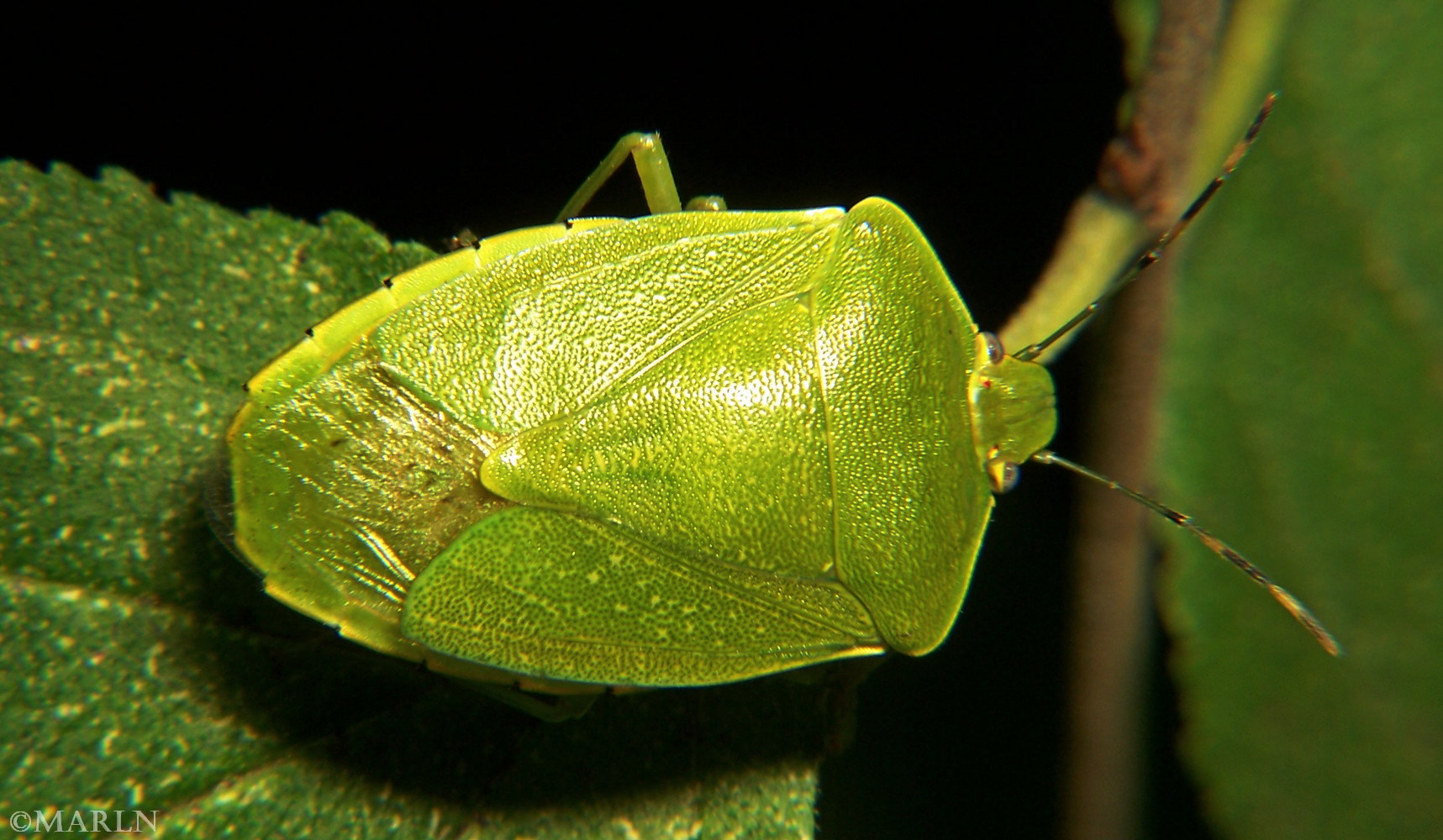Green Stink Bug – Acrosternum hilare
Family Pentatomidae – Stink Bugs
Live adult and nymph green stink bugs photographed at DuPage County, Illinois, USA
Stink bugs feed on developing seed of many hosts including trees, shrubs, vines, weeds and many cultivated crops. They may also feed on the stems and foliage when seed are not present. Both nymph and adult stink bugs pierce plants with their needlelike mouthparts and suck sap from pods, buds, blossoms and seeds; the degree of damage depends on the developmental stage of the plant when it is attacked. Immature fruit and pods become deformed as they develop, and seeds are often flattened and shriveled. Germination can be reduced, or the seeds may fail to germinate at all.
The family name, Pentatomidae, comes from the Greek “pente” (five) + “tomos” (a section) ; perhaps a reference to the 5-segmented antennae, or perhaps a reference to the body, which, when viewed from above, appears to be divided into 5 large sections. The scutellum is the largest section.
Tachinid fly Trichopoda pennipes lays its eggs on many types of bugs, including leaf-footed and stink.
Order Hemiptera: True Bugs number almost 5,000 species in North America, and 40,000 worldwide. They have mouthparts formed into a beak, adapted for sucking plant juices or the liquefied insides of their animal prey.
Suborder Auchenorrhyncha – Cicadas & Planthoppers
Suborder Sternorrhyncha – Aphids, scales, mealybugs, jumping plant lice.
Bugs Main | Bugs Index | Assassin Bugs | Plant Bugs | Ambush Bugs


